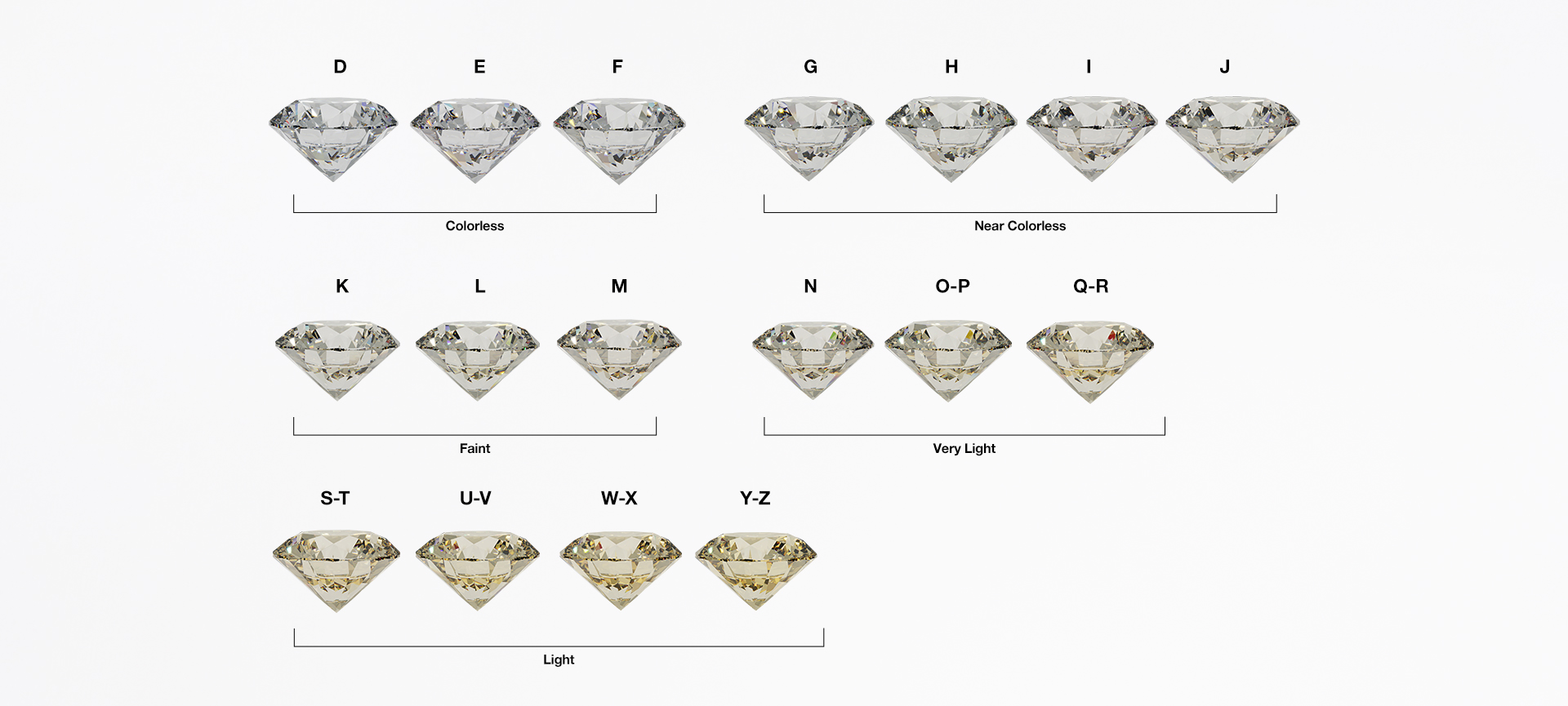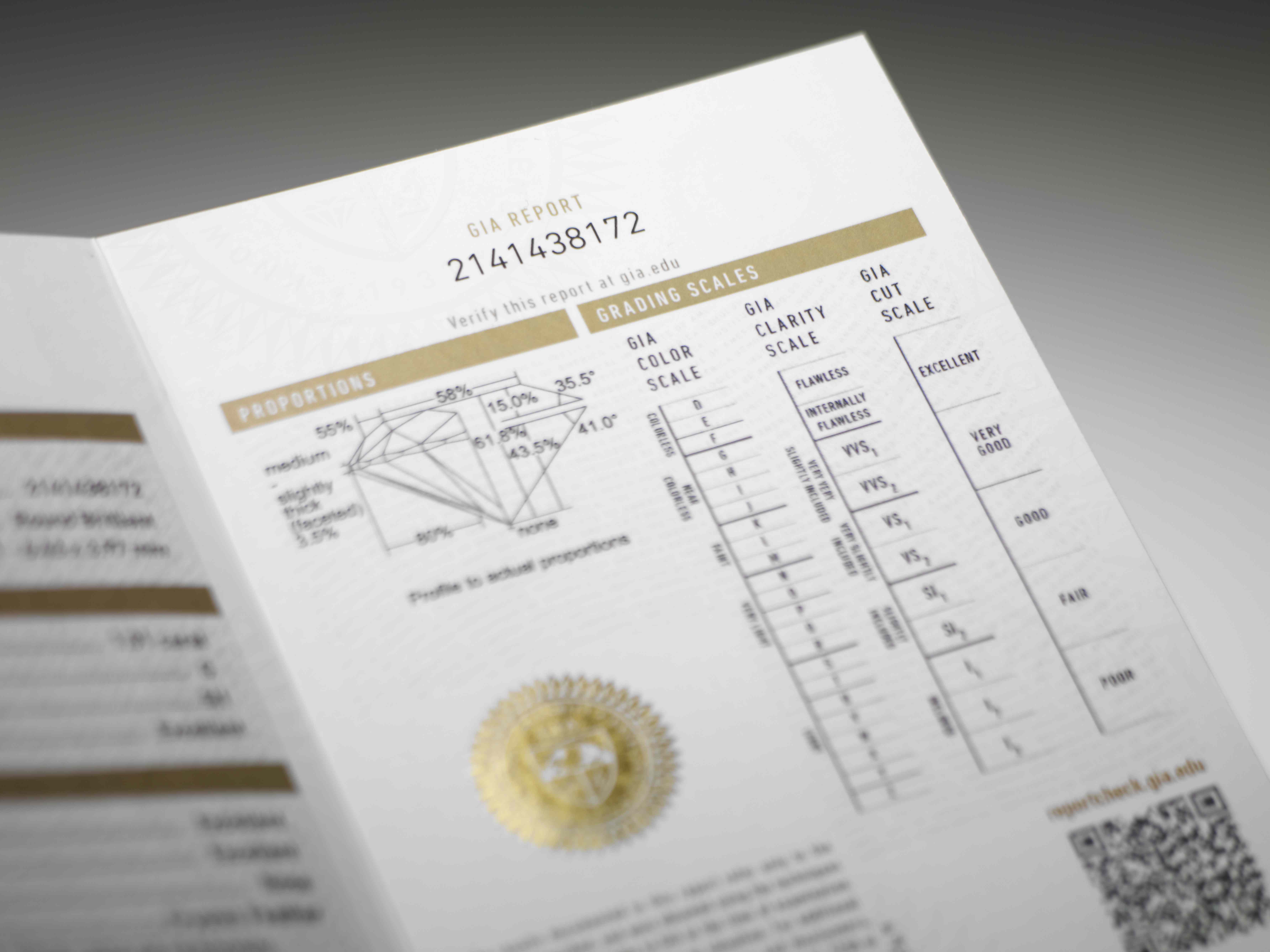As you’re shopping for diamonds, a diamond color chart comes in handy if you’re trying to understand the subtle color differences of D-to-Z diamonds. A simple online search for “diamond color chart” delivers a host of different graphics showing the relationship between diamond color and the respective color grade. The one thing nearly all these diamond charts have in common is that they’re derived from one standard – the GIA Color Scale.
This is the official “chart,” or scale that is printed on GIA diamond grading reports as a reference for communicating a diamond’s color quality. And this is terminology your jeweler will use when talking about diamond color and value. So it’s important that you familiarize yourself with the GIA Color Scale.
In this post, you can learn about and download the official GIA Color Scale, work with an interactive diamond color chart to see the relationship between grades and colors, and watch a useful GIA Diamond Color Grading video to see how GIA evaluates diamond color.
Official GIA Color Scale
GIA developed the definitive diamond color scale or chart in the early 1950s, a time when there were a lot of different and subjective terms in the marketplace for describing a diamond’s color: white, blue white, AAAA, for example.
The GIA scale begins with the letter D, representing colorlessness, and continues with increasing presence of color to the letter Z, representing light yellow, light brown or light gray. The 23 color grades on the GIA Color Scale (or diamond color chart) are subdivided into five subcategories, which are: colorless (D-F); near colorless (G-J); faint (K-M); very light (N-R); and light (S-Z).
Each letter grade has a clearly defined narrow range of color appearance.
GIA Interactive Color Scale
With diamonds, color distinctions are so subtle that they are often not noticeable to the untrained eye. That said, these seemingly subtle distinctions can significantly affect diamond quality grading, and of course, price.
This interactive color scale tool can help you see the differences in color. Move the bottom slider left and right on the color scale to become familiar with the level of colorlessness associated with each grade. Do you notice the subtle color change from one grade to another?
The color evaluation of most gem-quality diamonds is based on the absence of color. Within the D-to-Z range, when all other value factors are equal, colorless diamonds are the most valuable.
Download the GIA app to access the Official GIA Color Scale and take it diamond shopping to help you identify the differences in a color grade.
Diamond Color Grading Video
Now that you’ve seen the official GIA Color Scale and worked with the interactive diamond color chart, you have a better understanding of the grading terms and how these relate to diamond color. But do you know how a diamond actually gets assigned a color grade? Just as GIA developed the D-to-Z color scale, it also established the grading methods and best practices for evaluating diamond color.
Watch GIA’s 4Cs video: GIA Diamond Color Grading to follow a diamond through the GIA color grading process.
Before you embark on your diamond search, learn about diamond color and the importance of the diamond color chart. And when you’re ready to make a purchase, be sure to request a GIA Diamond Grading Report or GIA Diamond Dossier™ and look for the color grade provided.
Custom Field: Array


